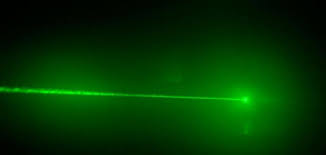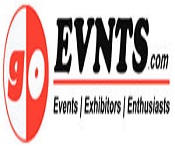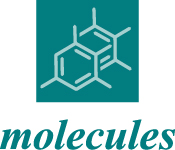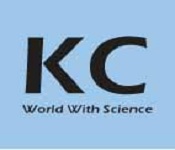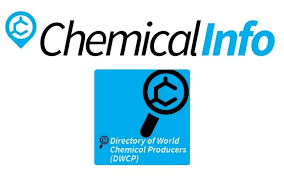Crystallography 2021
About Conference
EuroSciCon invites all the participants from all over the world to attend 6th Edition of International conference on Advanced Spectroscopy, Crystallography and Applications in Modern Chemistry during September 20-21, 2021, at Paris, France which includes prompt keynote presentations, Oral talks, Poster presentations and Exhibitions.
Crystallography 2021 provides a perfect symposium for scientists, engineers, directors of companies and students in the field of Materials science, Physics, Chemistry and Structural Biology to meet and share their knowledge. The theme of the conference is "Unveiling the Advancements in Modern Chemistry-Crystallography and Spectroscopy". The scientific program paves a way to gather visionaries through the research talks and presentations and put forward many thought provoking strategies. It provides a premier technical forum for reporting and learning about the latest research and development, as well as for launching new applications and technologies.
This event will focus on Application of Modern Chemistry, Advanced Spectroscopy and variety of Crystallography Sessions including Chemical Crystallography, Crystallography in Materials Science, Crystallography in Biology, Electron Crystallography, Crystallography Applications through invited plenary lectures, symposia, workshops, invited sessions, oral and poster presentations of unsolicited contributions.Maximize your personal involvement, engagement by getting together on September 20-21, 2021 with an interactive discussions and workshops at the conference, you will feel free to reach out and share your thoughts to continue your lifelong learning and build on the skills that make you successful.
Target Audience:
- Eminent Scientists from Materials Science and Crystallography
- Chemistry Research Professors
- Junior/Senior research fellows from Universities
- Directors of companies of Spectroscopy and Mass Spectrometry
- Members of different Materials science and Spectroscopy associations
- Crystallography Experts
- Spectroscopy Experts
Sessions/Tracks
Session 1: Crystallography
Crystallography, the science of Crystals represents the nature of a crystal and mostly their Atomic Structure, is very crucial for most of the practicing Scientists whose research work relates with materials and their structures. For example, Crystallography or, Crystal Structure is being utilized by Chemists to find and combined new substance mixes and to change its physical properties. Crystallography is utilized by the vast majority of the Pharmaceuticals and medication finding organizations to make helpful adjustments in drugs. Furthermore, Crystallography assists with inquiring about into how medications target proteins, the atoms that are basic for living beings to work appropriately. Materials Scientist relies upon Crystallography to concentrate new materials having numerous Industrial applications. Gems of Lithium niobate are utilized in the telecom markets. Crystallography is a logical control in its own privilege. Additionally, Crystallographers have their own global association and their own frameworks of Nomenclature and Notation. Crystallography can be found in all science perspectives like Chemistry, Physics, Biology, Materials science and Mathematics, just as in numerous businesses.
- Small Molecule Crystallography: Novel Structures and General Interest
- Computational Crystallography
- Supermolecular Crystallography
- Polymer Crystallization
- Nano Crystallography
- Electron Crystallography
- Crystallization

Track 2: Advanced Crystallography
Valuable Crystal are commonly associated with having regularly developed, level and smooth external faces. It has for a long while been seen that this affirmation of outside typicality is related to the consistency of inside structure. Diffraction methodologies are by and by available which give considerably more information about within structure of valuable stones, and it is seen that inside solicitation can exist with no outside affirmation for it.
- Ions and salts
- Chemical shift interaction
- Functional Crystals
- Organic & Inorganic Crystals
- Metal-Organic Frameworks (MOFs)
- Pharmaceutical Co-crystals
- Porous and Liquid Crystals
- Nano-materials and Nanotechnology
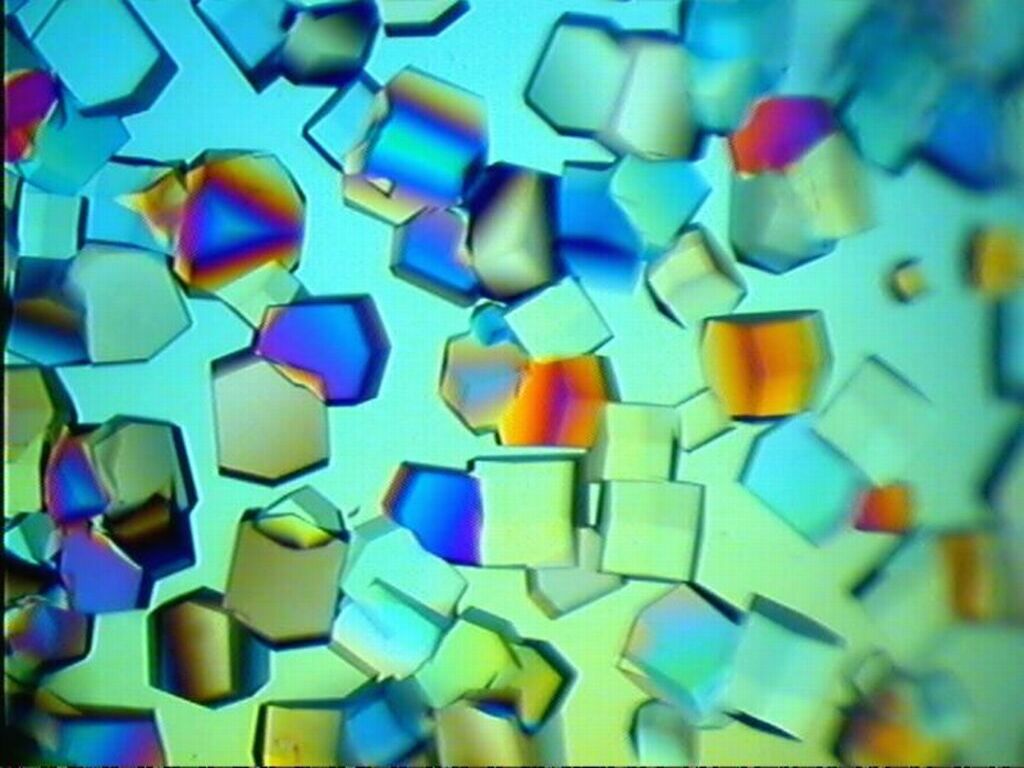
Track 3: X-Ray Crystallography
X-beam crystallography is a strategy used to decide the properties of a precious stone which incorporates nuclear and sub-atomic structure, in which the crystalline molecules cause a light emission X-beams to diffract into numerous particular headings. By estimating the edges and forces of these diffracted shafts, a crystallographer can deliver a three-dimensional image of the thickness of electrons inside the gem. From this electron thickness, the mean spots of the particles in the valuable stone can be settled, similarly as their manufactured protections, their crystallographic issue, and diverse other information. Since various materials can shape pearls, for instance, salts, metals, minerals, semiconductors, similarly as various inorganic, characteristic, and natural molecules—X-bar crystallography has been focal in the improvement of various legitimate fields. In its first numerous long stretches of usage, this strategy chose the size of particles, the lengths and sorts of blend securities, and the atomic scale contrasts among various materials, especially minerals and composites. The strategy additionally uncovered the structure and capacity of numerous natural particles, including nutrients, medications, proteins and nucleic acids, for example, DNA. X-beam crystallography is as yet the main technique for portraying the nuclear structure of new materials and in observing materials that seem comparative by different investigations. X-beam gem structures can likewise represent bizarre electronic or flexible properties of a material, shed light on compound cooperations and procedures.X-ray diffraction.
- Single-Crystal X-ray diffraction
- Fourier transformation
- Fiber diffraction
- Powder diffraction
- Contributions to Chemistry and Material Science
- Elastic vs. Inelastic Scattering
- Applications of X-ray diffraction
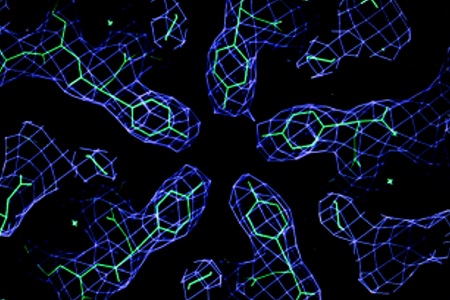
Track 4: Nuclear Magnetic Resonance Crystallography
Nuclear magnetic resonance crystallography is a approach which uses essentially NMR spectroscopy to decide the structure of strong materials on the nuclear scale. In this manner, strong state NMR spectroscopy would be utilized principally, potentially enhanced by quantum science computations (for example thickness practical hypothesis, powder diffraction and so on. On the off chance that appropriate precious stones can be developed, any crystallographic technique would for the most part be wanted to decide the gem structure containing if there should arise an occurrence of natural aggravates the atomic structures and sub-atomic pressing. The principle enthusiasm for NMR crystallography is in microcrystalline materials which are agreeable to this strategy yet not to X-beam, neutron and electron diffraction. This is to a great extent since cooperations of similarly short range are estimated in NMR crystallography.
- Dipolar interaction
- Non-covalent interactions
- Solid-State NMR
- Crystal Structure Refinements
- Applications of NMR
- NMR spectroscopy
- NMR crystallography

Track 5: Neutron Crystallography
Neutron crystallography has had an important but relatively small role in structural (glyco)-biology over the past years. Knowing precisely where hydrogen particles are found and how they are moved between bio-macromolecules, dissolvable atoms and substrates is a piece of the full comprehension of numerous natural structures and processes. Neutron crystallography is a powerful technique for locating hydrogen atoms and yield information on the nature of bond involving hydrogen, as well as identifying water molecules. Neutron crystallography can also be used to identify hydrogen atoms that have been exchanged with deuterium and the subsequent extend of the exchange. This provides ways to identify isotopically labeled structural features and for characterizing solvent accessibility and macromolecular dynamics, thereby offering a complementary tool to NMR methods.
- Nuclear Scattering
- Magnetic Scattering
- Neutron Diffraction
- Electron Diffraction

Track 6: Crystal Structure
In crystallography, Crystal structure is a depiction of the orchestrated course of action of particles, particles or iota’s in a crystalline material. Mentioned structures occur from the trademark thought of the constituent particles to shape symmetric models that go over along the key direction of three-dimensional space in issue. In a precious stone, iotas are orchestrated in straight lines in a three-dimensional intermittent example. A little piece of the gem that can be rehashed to shape the whole precious stone is known as a unit cell. The components are found in an assortment of precious stone pressing game plans. The most well-known cross section structures for metals are those acquired by stacking the nuclear circles into the most conservative plan.
- Inorganic crystal Structure
- Atomic Coordination
- Polymorphism
- Growth of Semiconductor Crystal
- Miller Indices
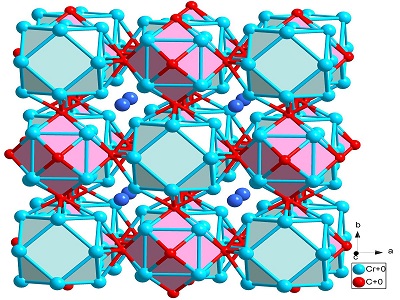
Track 7: Crystal Growth
Crystal growth is the process where a pre-existing crystal becomes larger as more growth units (e.g. molecules, ions) add in their position in the crystal lattice is developed into a crystal and further growth is processed. A crystal is defined as being atoms, molecules, or ions arranged in an orderly repeating pattern, a crystal lattice, extending in all three spatial dimensions. So precious stone development varies from development of a fluid bead in that during development the atoms or particles must fall into the right cross section positions all together for a very much arranged gem to develop. The schematic shows a very simple example of a crystal with a simple cubic lattice growing by the addition of one additional molecule. When the molecules or ions fall into the positions different from those in a perfect crystal lattice, crystal defects are formed. Typically, the molecules or ions in a crystal lattice are trapped in the sense that they cannot move from their positions, and so crystal growth is often irreversible, as once the molecules or ions have fallen into place in the growing lattice, they are fixed in place.
- Crystal growth kinetics and mechanisms
- Crystal morphology
- Diamonds growth
- Organic Crystal Scintillators
- Phase Transitions: seeding, growth, transport
- Melt Growth 1: hydrodynamic concepts, external fields
- Melt Growth 2: microgravity and modeling
- Aqueous solution, ammonothermal growth
- Growth from melt solution, liquid phase epitaxy
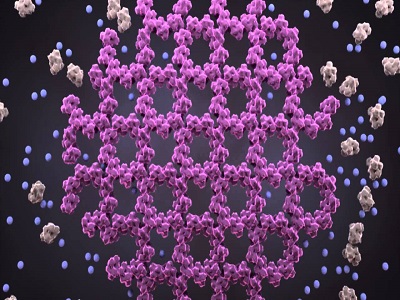
Track 8: Crystallography of Novel Materials
It ought to be obvious that all matter is made of iotas. From the irregular table, it tends to be seen that there are simply around 100 different sorts of particles in the entire Universe. These equivalent 100 atoms shape a large number of unmistakable substances running from the air we breathe in to the metal used to support tall structures. Metals carry on uniquely in contrast to pottery, and earthenware production act uniquely in contrast to polymers. The properties of issue depend on whereupon particles are used and how they are strengthened together. The structure of materials can be grouped by the extent of different elements being considered.The nuclear structure basically influences the substance, physical, warm, electrical, attractive, and optical properties. The microstructure and macrostructure can moreover impact these properties yet they generally to a great extent influence mechanical properties and on the pace of invention reaction. The properties of a material offer intimations with regards to the structure of the material. The nature of metals suggests that these particles are held together by strong bonds. Regardless, these bonds ought to in like manner license atoms to move since metals are moreover regularly formable. To comprehend the structure of a material, the sort of particles present, and how the iotas are organized and fortified must be known. We should initially look at atomic holding. Early organic and small biological molecules.
- Mineralogy and metallurgy
- Metals and Alloys
- Ceramics and Polymers
- Thin films
- Quasi-crystals
- Amorphous Materials
- Bulk Nitride Crystals
- Novel crystallization strategies for XFEL studies
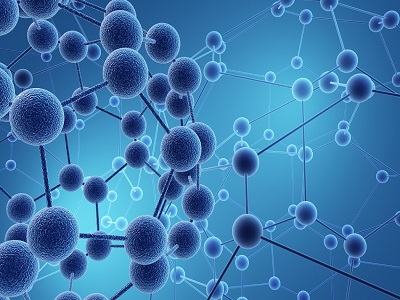
Session 9: Chemical Crystallography
Chemical Crystallography is an utilization of diffraction strategies to the examination of essential science. An incessant reason for existing is the recognizable proof of common items, or of the results of manufactured science tests, point by point sub-atomic geometry, intermolecular collaborations and supreme designs can likewise be considered. Structures can be analyzed as a component of temperature, weight or the usage of electromagnetic radiation, or alluring or electric field: such examinations includes simply little minority of the total. The usage of single valuable stone X-shaft diffraction to choose the structure of an invention compound has been assigned 'Substance Crystallography. The techniques, joined with modem PC contraptions and Advances in development makes this part of science an unequivocal provider of exact and accurate estimations of sub-nuclear estimations. Structure affirmation by powder diffraction, valuable stone planning, charge thickness assessment and studies on molecules in invigorated states are the late extra things.
- Engineering of Crystalline and Non-crystalline Solids
- Structure and Properties of Functional Materials
- Metal-organic Frameworks and Organic: Inorganic Hybrid Materials
- Reactions and Dynamics in the Solid State
- Chemical crystallography
- Mounting the Crystal

Session 10: Crystallography in Biology
The three-dimensional structures of thousands of organic macromolecules have been dictated by X-beam diffraction, since the principal structures were accounted for about 50 years prior. The structures uncovered how basic the shapes and sizes of the particles are to perform different natural procedures in living animals. Notwithstanding giving nuclear subtleties of how the particles work and communicate with different atoms, the structures help in planning prescriptions. We have encountered an uncommon extension of crystallography into science and medication, driven by innovative advances – recombinant DNA innovation, registering, synchrotrons, improved crystallization strategies, new staging and refinement calculations and so on. From one perspective there have been tremendous accomplishments in characterizing the apparatus of life; the ribosome, GPCRs and other film proteins, DNA replication, the invulnerable framework, entire infections.
- Bio-Macromolecular Crystallography
- Proteolysis
- Electron paramagnetic resonance (EPR)
- Cryo-electron microscopy (cryo-EM)
- Multi-angle light scattering
- Small angle scattering
- Ultrafast laser spectroscopy
- Structure of interfaces
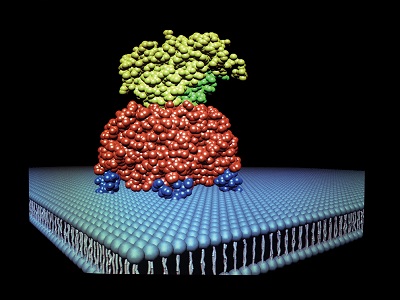
Session 11: Polymer Crystallography
Polymer crystals have unexpected properties in comparison to basic nuclear gems. They have high thickness and long range request. They don't have isotropy, and along these lines are anisotopic in nature, which implies they show anisotropy and constrained compliance space. Be that as it may, similarly as nuclear precious stones have cross sections, polymer gems likewise display an intermittent structure called a grid, which portrays the redundancy of the unit cells in the space. The two essential crystallographic methods utilized for contemplating polymer structure, Xâ€ray fiber diffraction investigation and polymer electron crystallography, are portrayed in this section. Xâ€ray fiber diffraction investigation is an assortment of crystallographic methods used to decide atomic and precious stone structures of particles, or sub-atomic gatherings, that structure examples (frequently strands) in which the particles, congregations or crystallites are roughly equal however not in any case requested.
- Polymer engineering
- Conductive polymer
- Crystallization of polymers
- Multiscale modeling
- Crystalline Polymer Morphology
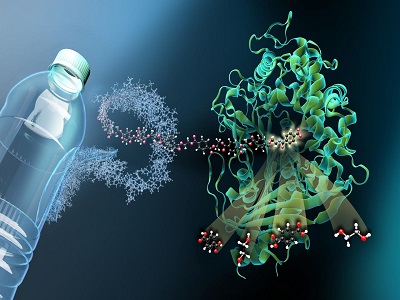
Session 12: Crystal Engineering
Crystal Engineering (CE) targets understanding intermolecular cooperations with regards to the gem pressing and use such comprehension in the plan and combination of new strong state practical structures with wanted physical and compound properties. Engineering strategies typically rely on hydrogen bonding and coordination bonds, but can also use other interactions, such as halogen bonds and π–π interactions.
- Crystal Growth & Design
- Hydrogen bond
- Molecular design software
- Supramolecular chemistry
- Multi-component crystals
- Spectroscopy at Fusion Reactors
- Surface Stress Measurements
- Photo-Crystallography
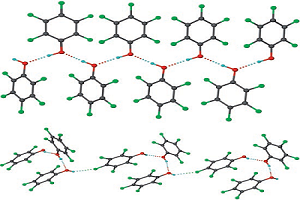
Session 13: Atomic Physics
Atomic physics, the logical investigation of the structure of the molecule, its vitality states, and its cooperations with different particles and with electric and attractive fields. Nuclear material science has end up being a staggeringly fruitful use of quantum mechanics, which is one of the foundations of present day material science. It is basically worried about the course of action of electrons around the core and the procedures by which these plans change. This involves particles, nonpartisan molecules and, except if in any case expressed, it tends to be accepted that the term iota incorporates particles. The term nuclear material science can be related with atomic force and atomic weapons, because of the equivalent utilization of nuclear and atomic in standard English. Physicists recognize nuclear material science—which manages the iota as a framework comprising of a core and electrons—and atomic physical science, which considers atomic responses and extraordinary properties of nuclear cores.
- Atomic engineering
- Quantum mechanics
- Molecular Physics
- Laser Spectroscopy
- Atoms in Magnetic Fields
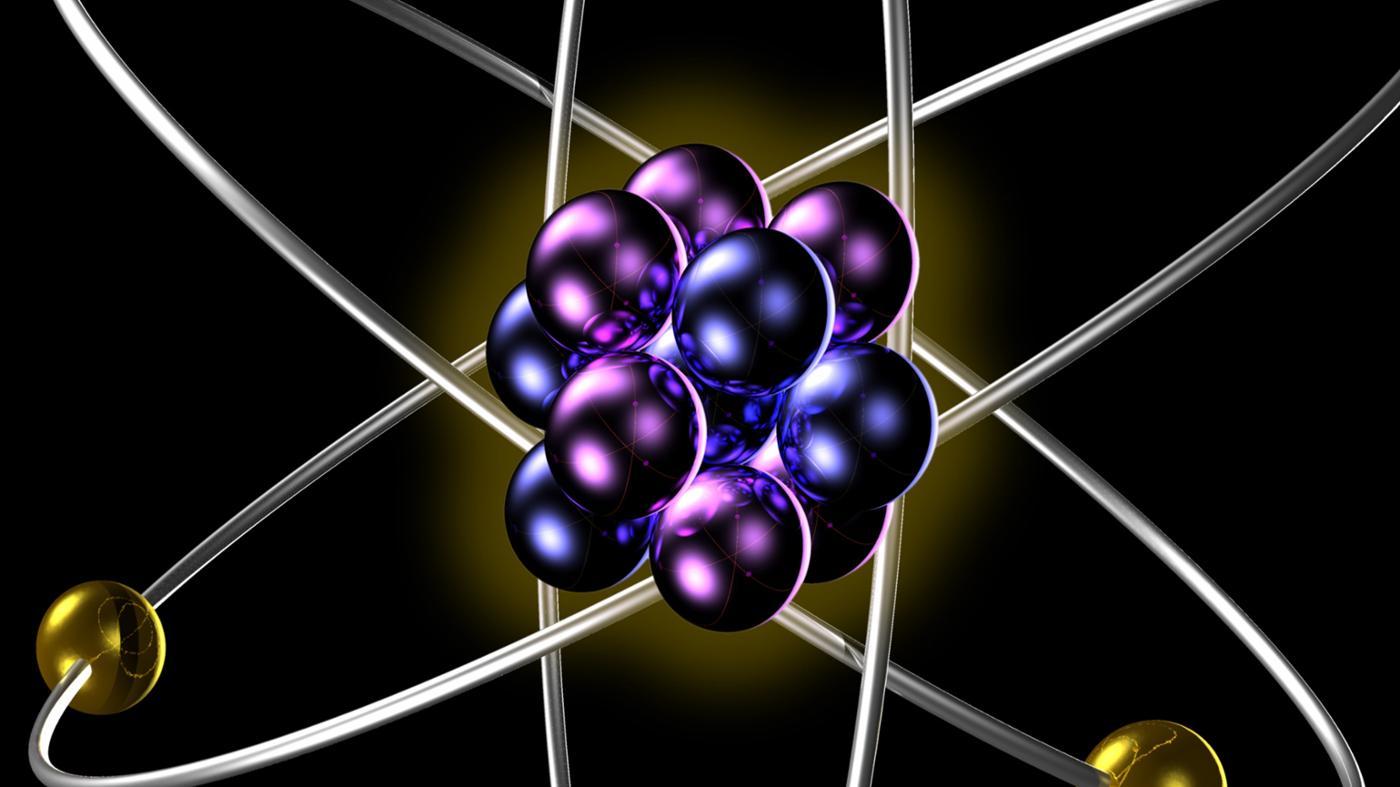
Track 14: Spectroscopy
Spectroscopy is the investigation of the cooperation among issue and electromagnetic radiation. Truly, spectroscopy began through the investigation of noticeable light scattered by its frequency, by a crystal. Later the idea was extended significantly to incorporate any communication with radiative vitality as a component of its frequency or recurrence. Spectroscopic information are frequently spoken to by an emanation range, a plot of the reaction of enthusiasm as an element of frequency or frequency.One of the focal ideas in spectroscopy is a reverberation and its comparing full recurrence. Resonances were first portrayed in quite a while, for example, pendulums. Mechanical frameworks that vibrate or sway will encounter enormous plentifulness motions when they are driven at their full recurrence. A plot of plentifulness versus excitation recurrence will have a pinnacle focused at the reverberation recurrence. This plot is one kind of range, with the pinnacle regularly alluded to as a ghastly line, and most ghostly lines have a comparative appearance. Spectra of particles and atoms frequently comprise of a progression of otherworldly lines, every one speaking to a reverberation between two distinctive quantum states. The clarification of these arrangement, and the ghastly examples related with them, were one of the trial conundrums that drove the turn of events and acknowledgment of quantum mechanics. The hydrogen unearthly arrangement specifically was first effectively clarified by the Rutherford-Bohr quantum model of the hydrogen iota. At times ghastly lines are very much isolated and discernable, however phantom lines can likewise cover and have all the earmarks of being a solitary progress if the thickness of vitality states is sufficiently high. Named arrangement of lines incorporate the head, sharp, diffuse and crucial arrangement.
- Symmetry and Molecular Spectroscopy
- Spectroscopy and Molecular Structure
- Infrared Spectroscopy Life
- X-ray photoelectron spectroscopy (XPS)
- Small Molecule Spectroscopy and Dynamics
- Photoemission Spectroscopy
- Raman Spectroscopy
- Time-Stretch Spectroscopy
- Ultraviolet Photoelectron Spectroscopy (UPS)
- Ultraviolet visible Spectroscopy
- Vibrational circular dichroism Spectroscopy
- Dynamic Force Spectroscopy
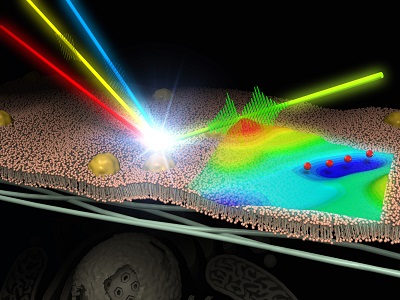
Track 15: Astronomical Spectroscopy
Astronomical spectroscopy is the investigation of cosmology utilizing the methods of spectroscopy to quantify the range of electromagnetic radiation, including obvious light and radio, which transmits from stars and other heavenly items. A heavenly range can uncover numerous properties of stars, for example, their concoction sythesis, temperature, thickness, mass, separation, radiance, and relative movement utilizing Doppler move estimations. Spectroscopy is likewise used to contemplate the physical properties of numerous different kinds of divine items, for example, planets, nebulae, universes, and dynamic galactic cores. Spectroscopy is one of the essential devices available to a stargazer, permitting one to decide the compound creations, physical properties, and spiral speeds of galactic sources. Spectroscopy is the methods used to quantify the dull issue substance of worlds, the majority of two stars in circle about one another, the mass of a bunch of systems, the pace of development of the Universe, or find an exoplanet around different stars, all utilizing the Doppler move. It makes it possible for the astronomer to determine the physical conditions in distant stars and nebulae, including the chemical composition and temperatures, by quantitative analysis of the strengths of spectral features, thus constraining models of chemical enrichment in galaxies and the evolution of the universe.
- Optical spectroscopy
- Radio spectroscopy
- Interstellar medium
- Doppler effect and redshift
- Planets, asteroids, and comets
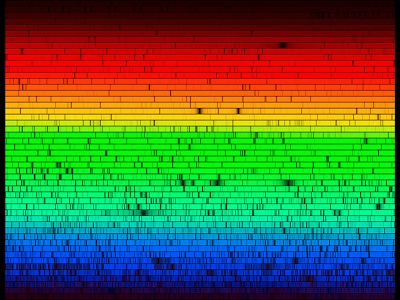
Track 16: Biomedical Spectroscopy
Biomedical spectroscopy is a multidisciplinary look into field including spectroscopic apparatuses for applications in the field of biomedical science. Vibrational spectroscopy, for example, Raman or infrared spectroscopy is utilized to decide the concoction creation of a material dependent on recognition of vibrational methods of constituent particles. Some spectroscopic strategies are routinely utilized in clinical settings for determination of ailment; a model is Magnetic reverberation imaging (MRI). Fourier change infrared (FTIR) spectroscopic imaging is a type of compound imaging for which the complexity is given by arrangement of the material. Spectroscopy is a fundamental innovation that makes these biomedical applications, thus numerous others, conceivable. Avantes, a pioneer in the improvement of high-affectability, high-goals spectrometers, is the confided in decision for many specialists and unique gear makers in biomedical applications.
- UV Absorbance and Fluorescence Applications
- Biological Sensing Using SPR Spectroscopy
- Applications of X-ray
- Protein Detection and Identification
- Fluorescent Response in Action
Track 17: Photoemission Spectroscopy
Photoemission spectroscopy (PES) has been set up as one of the most significant strategies to examine the electronic structure of particles, solids and surfaces. Moreover, PES has boundless pragmatic ramifications in different fields like surface science or material science, and has altogether added to the comprehension of central standards in strong state material science. The term alludes to different methods, contingent upon whether the ionization vitality is given by X-beam photons or bright photons. Despite the episode photon bar, in any case, all photoelectron spectroscopy rotates around the general topic of surface investigation by estimating the launched out electrons.
- X-ray photoelectron spectroscopy
- Ultraviolet photoelectron spectroscopy
- Two-photon photoelectron spectroscopy
- Vibronic spectroscopy
- Angle resolved photoemission spectroscopy
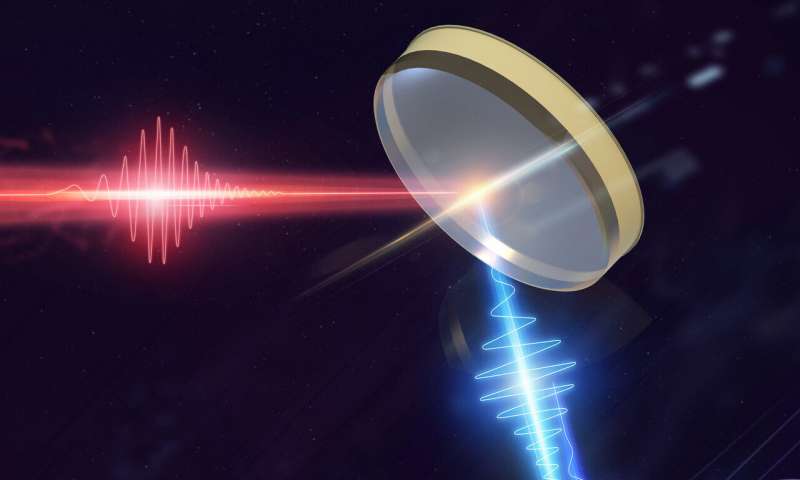
Track 18: Crystallography Applications
Crystallography strategy has been a comprehensively used gadget for outline of blends present in channel and various sorts of information procured through structure work relationship. But more point by point information from X-pillar examination has been made sure about from substances which are regularly known to be crystalline, it has been stunning to find substances for the most part considered as being non-crystalline as truly having a mostly crystalline structure and that this structure can be changed by warmth treatment, weight, broadening, etc. Casein is an instance of the last class of proteins. Stewart has shown that even courses of action tend to acknowledge a systematic approach of social occasions inside the plan. Thusly, liquid channel should, and gives a type obviously of activity. The mineral constituent and lactose are the principle certified crystalline constituents in dairy things that can be researched by X-pillar; regardless, charming essential changes have been found in butterfat, channel powder, casein and cheddar.
- High-Resolution Charge Density Studies
- Semiconductors and Insulators
- X-ray method for investigation of drugs
- X-ray method for investigation of textile fibers and polymers
- Pre-clinical imaging
- Spectroscopy at Fusion Reactors
- Surface Stress Measurements
- Photo-Crystallography
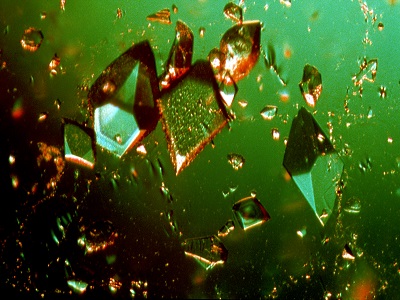
Track 19: Spectroscopy Applications
The Photoacoustic estimates the sound waves delivered upon the ingestion of radiation. Photothermal spectroscopy estimates heat endless supply of radiation. Siphon test spectroscopy can utilize ultrafast laser heartbeats to quantify response intermediates in the femtosecond timescale. Raman optical action spectroscopy misuses Raman dissipating and optical movement impacts to uncover point by point data on chiral focuses in molecules. Spin commotion spectroscopy follows unconstrained vacillations of electronic and atomic spins. Time-settled spectroscopy gauges the rot rate(s) of energized states utilizing different spectroscopic methods. Thermal infrared spectroscopy estimates warm radiation produced from materials and surfaces and is utilized to decide the kind of securities present in an example just as their grid condition. The methods are generally utilized by natural physicists, mineralogists, and planetary researchers. Transient grinding Spectroscopy estimates quasiparticle spread. It can follow changes in metallic materials as they are lighted.Spectroscopy in Environmental Analysis
- Spectroscopy in Biomedical Sciences
- Spectroscopy in Astronomy
- Spectroscopy in Laser-induced Fluoroscence
- Spectroscopy in Materials Science
- Atomic Emission Spectroscopy (AES)
- Atomic Absorption Spectroscopy (AAS)
- Applications in Mass Spectrometry
- Spectroscopy in the Photon Migration Regime

Track 20: Application of Modern Chemistry
Modern Analytical Chemistry is used in the analysis of light energy emitted by electrons, atoms, ions, or molecules at their ground state. Current Analytical Chemistry manages the assurance of segment structure IR range is utilized to recognize the bonds when natural compound is presented to electro-attractive radiation. Current Experimental Chemistry completely manages the essentials of energy and heterogeneous catalysis in present day science. Present day Experimental Chemistry are utilized in couple bunch strategy for ground and existed states, geminal wave capacities installing techniques for investigating potential vitality. Modern Heterocyclic Chemistry or a heterocyclic substance with a band framework is a cyclic substance that has atoms of at least two different components as associates of its rings. Modern Heterocyclic Chemistry mainly deals with the study of heterocyclic compounds it is used in the development and increasing the relevant biological targets (enzymes, modulators).Modern Inorganic Chemistry deals with the study of the features and actions of inorganic and organometallic substances. Current Inorganic Chemistry has programs in all aspects of the substance business including catalysis, materials innovation, pigmentation, surfactants, covers, medicine, vitality, and farming. Modern Nuclear Chemistry is the investigation of physical science and science of heaviest components their atomic properties, for example, structure, response radioactive rot. Current Nuclear Chemistry manages nuclear procedure, for example, ionization, x-beam emanation, atomic terminology, overview of atomic rot types, atomic science. Present day Physical Organic Chemistry is chiefly centered around the compound structures and their reactivity to examine their natural particles which incorporate the investigation of their rates and responses. Present day Physical Organic Chemistry has wide applications in synthetic science, bioorganic science, electro-photochemistry, Polymer, Supramolecular science, Nanotechnology and medication disclosure.
- Innovations in Mass Spectrometry techniques
- Mass Spectrometry Imaging approaches and applications
- Ion Mobility Spectrometry
- Current Brain Research with NMR Spectroscopy
- Advances in Chromatography and Crystallography
- Crystal Lattices
- Advanced Trends in Organic Chemistry
- Modern Organic Chemistry and Applications
- Structural effects in Organic Electrochemistry
- Crystallography and Structural Biochemistry
- Coordination & Crystallographic Defects
- Macromolecular structure and function
- Polymer Chemistry
- Material Chemistry for Electrochemical capacitors
- Materials Synthesis
Market Analysis
MARKET ANALYSIS
X-Ray Crystallography Market: The global proteomics market is estimated to reach USD 21.87 Billion by 2021, at a CAGR of 11.7% during the forecast period. The global market exhibits potential for significant growth and is propelled by the increasing need for personalized medicine, R&D expenditure, technological advancements, and increased funding for proteomics projects. However, a few pivotal factors hampering the growth of this market include the reduced funds in key markets, sequestration cuts in the U.S. and reduced funds for proteomics research, high cost of tools and equipment, and dearth of skilled researchers.
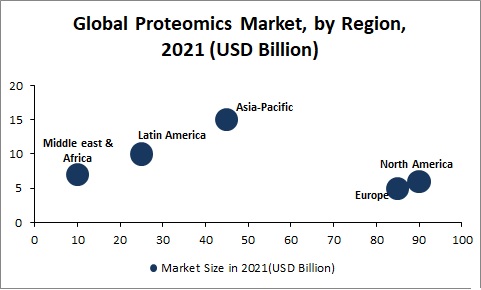
Protein Crystallization & Crystallography Market: The protein crystallography market is segmented on the basis of technologies, applications, products (instruments and reagents), and end users. Based on technology, the global market is further segmented into protein purification, protein crystallization, protein crystal mounting, and protein crystallography. Protein crystallization is the most crucial and the largest segment, and it accounted for 47% of the market in 2013. On the basis of products, the protein crystallization market has segments such as reagents/consumables and instruments. Reagents/consumables accounted for 85% of the protein crystallization & crystallography product market. It is expected to grow at a high CAGR of 11% over the forecast period.
Mass Spectrometry Market: The global mass spectrometry market is expected to reach USD 5.27 Billion by 2022 from USD 3.68 Billion in 2017, at a CAGR of 7.4%. The growth of this market is majorly driven by technological advancements in mass spectrometry, government initiatives for pollution control and environmental testing, increasing spending on pharmaceutical R&D across the globe, government regulations on drug safety and growing petrochemical industry. However, the high cost of equipment is likely to restrain the growth of the market during the forecast period.

Molecular Spectroscopy Market: The global molecular spectroscopy market is expected to reach USD 6.85 Billion by 2022 from USD 4.98 Billion in 2017, at a CAGR of 6.6%. The growth of this market is majorly driven by food safety concerns, the growth of the pharmaceutical and biotechnology industry, technological advancements in molecular spectroscopy and application of molecular spectroscopy in environmental screening. However, the high cost of equipment is likely to restrain the growth of the molecular spectroscopy market during the forecast period.
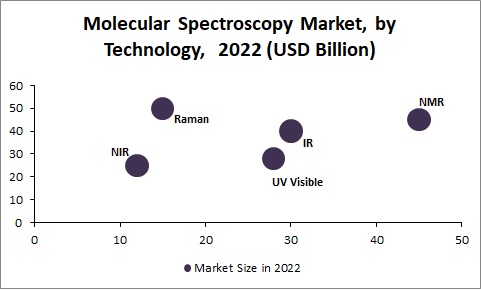
UV/Visible Spectroscopy Market: The UV/visible spectroscopy market is poised to reach USD 1,163.2 Million by 2021, growing at a CAGR of 4.3 % during the forecast period of 2016 to 2021. The growth of the market can be attributed to application of UV/visible spectroscopy in environmental testing; growing use in the pharmaceuticals and biotechnology industries; technological advancements in instrumentation; and increasing need for food analysis. In the coming years, the market is expected to witness the highest growth rate in the Asia-Pacific region. North America is expected to account for the largest share of the global UV/visible spectroscopy market in 2016. However, longevity of instruments and dearth of skilled professionals is likely to restrain the growth of the market to a certain extent during the forecast period.
Major Crystallography Associations around the Globe
- British Crystallography Association (BCA)
- Indian Crystallographic Association (ICA)
- European Crystallographic Association (ECA)
- French Crystallographic Association (FCA)
- Asian Crystallographic Association (ACA)
- Turkish National Crystallographic Association
- Croatian Crystallographic Association
- Czez and Slovak Crystallographic Association
- International Union of Crystallography
- German Society for Crystallography
- German Mineralogical Society
- Korean Crystallographic Association

Statistical Analysis of Crystallography Associations
Major Spectroscopy Associations around the Globe
- American Society for Mass Spectrometry (ASMS)
- British Mass Spectrometry Society (BMSS)
- Chinese American Society for Mass Spectrometry (CASMS)
- French Society for Mass Spectrometry (SFSM)
- German Society for Mass Spectrometry (DGMS)
- International Mass Spectrometry Foundation (IMSF)
- Russian Society for Mass Spectrometry (VMSO)
- Swiss Group for Mass Spectrometry (SGMS)
Target Audience:
- Materials Scientists /Research Professors /Spectroscopic Experts
- Physicists /Chemists
- Junior / Senior research fellows of Materials Science /Spectroscopy /Chemical Engineering
- Directors of Materials/ Nano-Technologies /Spectroscopy companies
- Members of different Materials Science, Physics, Chemistry, Spectroscopy, Crystallography Associations
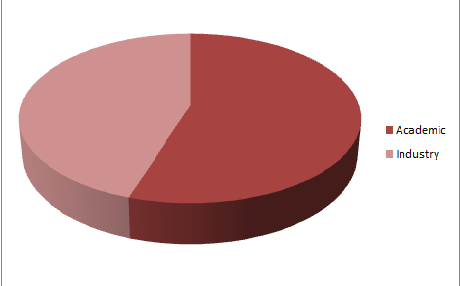
Graphical Representation of Attendance from different sectors
The global market analysis report in terms of graphical representation:
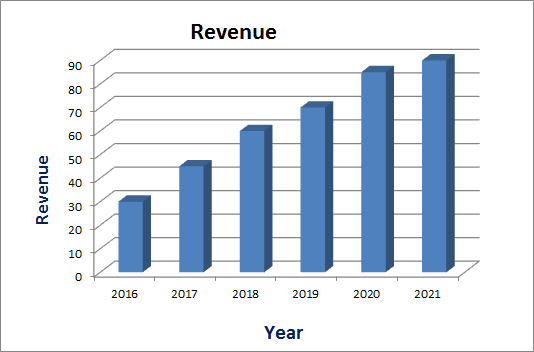
Statistical Analysis of Crystallography Global Market Revenue
Learn More
Crystallography Universities:
University of Southampton | University of Manchester | Durham University | Heriot-Watt University | University of Glasgow | University of Bristol | Princeton University | Newcastle University | University Of Copenhagen | University of Oxford | University of Strathclyde | University of Liverpoo | Pennsylvania State University | National Crystallography Service | Tel Aviv University | The University Of Utah | University of Cincinnati | Queen's University | The University of Adelaide | University of Michigan | University of Leicester | University of Kentucky | University of Calgary | Aarhus University | University College Cork | Institute of Crystallography | Utrecht University | University of Antwerp | University of Pittsburgh | University of Florida
Crystallography Societies and Associations :
Europe:
Czechoslovak Association for Crystal Growth | Czech and Slovak Crystallographic Association | European Crystallographic Association | European High Pressure Research Group | European Mineralogical Union | European Neutron Scattering Association | European Powder Diffraction Conference (EPDIC) | Suomen kansallinen kristallografian komitea | Finnish National Committee for Crystallography | Association Française de Cristallographie | Societe Francaise de la Neutronique | Société Française de Mineralogie et Cristallographie | Deutsche Gesellschaft fur Kristallographie | Deutsche Gesellschaft fur Kristallzuchtung und Kristallwachstum e. V. | Deutsche Mineralogische Gesellschaft |Hellenic Crystallographic Association | Irish Crystallographic Association | Cumann Criostalaghrafaiochta na hEireann | Associazione Italiana Cristallografia | Societa Italiana Luce di Sincrotrone | Italian Synchrotron Radiation Society | Society of Chemists and Technologists of Macedonia | Nederlandse Vereniging voor Kristallografie | Committee of Crystallography of the Polish Academy of Sciences | Polish Crystallographic Association | Polish Synchrotron Radiation Society |Polish Society for Crystal Growth | Russian National Committee for Crystallography | Serbian Crystallographic Society | Czechoslovak Association for Crystal Growth | Czech and Slovak Crystallographic Association | Comité Espanol de Cristalografia | Grupo Especializado de Cristalografia y Crecimiento Cristalino | Swedish Neutron Scattering Society | Swiss Society for Crystallography | Swiss Neutron Scattering Society | Turkish National Crystallographic Association | British Association for Crystal Growth | British Crystallographic Association | The Mineralogical Society of Great Britain and Ireland |
USA:
American Association for Crystal Growth | American Crystallographic Association | Mineralogical Society of America | Pittsburgh Diffraction Society | US National Committee for Crystallography | Asociacion Argentina de Cristalografia | Associaçao Brasileira de Cristalografia | Bulgarian Crystallographic Society | Croatian Crystallographic Association | Croatian Association of Crystallographers | International Union of Crystallography | International Union of Geological Sciences | Society of Chemists and Technologists of Macedonia | Sociedad Mexicana de Cristalografía | Association Marocaine de Cristallographie | South African Crystallographic Society |
Asia-Pacific:
Asian Crystallographic Association | Society of Crystallographers in Australia and New Zealand | Canadian Division - American Crystallographic Association | American Crystallographic Association | Canadian National Committee for Crystallography | Chinese Crystallographic Society | Indian Crystallographic Association | Clay Minerals Society | International Mineralogical Association | International Organization for Biological Crystallization | Japan Association of Mineralogical Sciences | The Crystallographic Society of Japan | Korean Crystallographic Association | Pakistan Association of Crystallography |
Crystallography Journals
Acta Crystallographica (A, B, C, D, E and F series)| Advanced Materials | Advanced Energy Materials | Advanced Engineering Materials | Advanced Functional Materials | Advanced Optical Materials | Bulletin of Materials Science | Chemistry of Materials | Computational Materials Science | Crystal Growth & Design | Journal of the American Ceramic Society | Journal of Applied Crystallography | Journal of Colloid and Interface Science | Journal of Materials Chemistry - A, B, and C | Journal of Modern Materials | Journal of Materials Research and Technology | Journal of Physical Chemistry B | Materials | Materials and Structures | Materials Chemistry and Physics | Materials Research Letters | Modelling and Simulation in Materials Science and Engineering | Nature Materials | Physical Review B | Progress in Materials Science | Science and Technology of Advanced Materials | Structural and Multidisciplinary Optimization | STRUCTURAL SCIENCE CRYSTAL ENGINEERING MATERIALS | STRUCTURAL CHEMISTRY | STRUCTURAL BIOLOGY | CRYSTALLOGRAPHIC COMMUNICATIONS | STRUCTURAL BIOLOGY COMMUNICATIONS | JOURNAL OF APPLIED CRYSTALLOGRAPHY | JOURNAL OF SYNCHROTRON RADIATION | Crystallography Reviews | Journal of Chemical Crystallography | CrystEnggComm | Crystal Growth & Design | Engineering of Crystalline materials properties Crystal Research and Technology | Journal of Structural Chemistry | Crystallography Reports | Crystal Growth & Design | CrystEnggComm | Engineering of Crystalline materials properties | Journal of Applied Crystallography | Journal of Molecular Graphics & Modelling | Photonics & Nanostructures - Fundamentals & Applications | Progress in Crystal Growth & Character. of Materials | Journal of Molecular Graphics & Modelling | Liquid Crystals |
Crystallography Companies in Europe
Crysalin | SARomics Biostructures | BioCryst Pharmaceuticals, Inc. | NTRC | GratXray | novatlantis ltd | novoMOF | InterAx Biotech Ltd | Advanced Accelerator Technologies AG | 4Quant | Excelsus Structural Solutions | Hydromethan AG | Expose GmbH | SwissNeutronics AG | DECTRIS AG | EULITHA AG | The Scripps Research Institute | PDB | INCOATEC | JANSI | rayonix | ZINSSER ANALYTIC | XOS | WYATT | UHV Design | TriTek Corp. | Photonic Science Limited | Princeton Instruments | Sigray | Solid State Analytics | South Bay Technology | SSCI | STOE | TECAN | Triana Sci & Tech | Zinsser Analytic | Charles river | ANATRACE | Covestro | Industrial Quick Search | Industrial Leaders | Long Island High Technology Incubator, Inc. | MacRAE'S Blue Book | ZYCON | Jaggaer | ALLIED METAL COMPANY | Alcoa | The Aluminum Association | ClouDNS | EABAA | Kaiser Aluminum | Metal Matrix Cast Composites | All Metals & Forge Group
Crystallography Companies in USA
MiTeGen |U-Protein Express BV | New TEC | Serero | proteros biostructures | Astex Pharmaceuticals | Structure Based Design, Inc. | Aglient | Art Robbins Instrument | ABCR | Unchained labs | HUBER | BRUKER | INCOATEC | Cambridge Crystallographic Data Centre | Jan Scientific, Inc. | CSD | ICDD | Mosaic Distribution LLC | OlexSys | ttplabtech | HAMPTON RESEARCH | OxfordCryosystems | DECTRIS | ACA | Jena | Bioscience | marXperts | European Crystallographic Association | Crystal Impact | fisherscientific | DS BIOVIA | ADC | Agilent | Antibodies | AXCO | Anton Paar | Miramodus Moleculer Models | Unchained | BIO-RAD | Calidris
Crystallography Companies in Asia
Molecular Dimensions | COD | CRYO INDUSTRIES | Cox Analytical Systems | Crystal Logic | CystalDesigner | CrystalMaker Softwar | CRYSTRAN | Diffraction Technology pty ltd | DOUGLAS Instrument | DECTRIS | Edmund Buhler GmbH | EXORGA INC. | Hiltonbrooks | Hampton research | GILSON | FORMULATRIX | HUBER | INEL | INO | J.SCHNEIDER | Jena Bioscience | Jordan Valley | Klinger Educational | LaboSoft Company | LINKAM SCIENTIFIC INSTRUMENTS | MALVERN | McPHERSON | REALICITY CORPORATION | Molecular Dimensions | MOXTEK | MSI | MVB Scientific | PANalytical | halo labs

